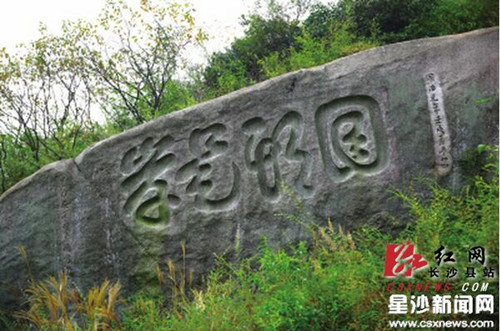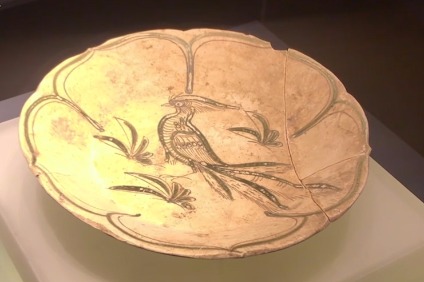Forgotten histories; the rediscovery of a Changsha county temple
By Richard Widdington and Dai Rongzhu
Updated: 2016-11-14
If these seem like slim evidential pickings to be working with, then the 2010 discovery in Changsha county of a Buddhist rock carving set a hopeful precedent for Yu to feed off. The finding had been pure chance and local media had quickly descended on Beishan where, amid dense flora, an ancient Buddhist mantra had been uncovered on an unsuspecting rock face buried in centuries of moss.
 |
|
The 2010 discovery at Beishan shows a Buddhist mantra of four characters carved into a rock face. [Photo/csxrmt.com] |
The local government has stated vague plans to develop the site into a regional tourist attraction and it is hoped the discovery will bring prestige to an area so often in the shadows of its more glamorous neighbors.
Yet six years on from the discovery Yu had made little progress and there is a famed Hunanese fable called The Peach Blossom Land that poetically evokes a sense of Yu's search. The story tells of a fisherman desperately looking for a utopia where sweet-scented peach trees are perennially in bloom and taxation has been banished. The fisherman relentlessly continues his pursuit but, alas, he never discovers the place he is looking for.
Just as the mythic Changde character searches for a place that one else believes in, so too Yu persisted in giving talks about a temple that didn't exist on any official records.
Despite Yu's enthusiasm, the scarcity of information twinned with the sheer amount of forest that needed to be explored made it an impossible venture for a man of Yu's age to undertake alone.
Fortunately, a group of young adventurers and amateur archeologists were stirred by Yu's passion and, after examining the sketches he had eked out of the late Wu, decided to devote some weekends to temple hunting.
It was on one such excursion in mid-October while hiking through an autumnal canopy of trees that the group discovered what they believed to be Yu's temple. Remarkably, Shixian was located in the same section of Beishan forest as the 2010 rock inscription.
They could have easily missed the site, so shrouded in foliage were the stone statues they found lying beside puddles. Yu was promptly contacted and, after verifying the validity of the site, local media was informed of the discovery on Oct 27. As Xingsha Times announced to readers in the villages and towns of Changsha country, the myth had roots - and rubble - after all.
Changsha seeks to revive porcelain production
In recent years, the local government has sought to revive the region's long tradition in porcelain making and boost local industry with the cultural influence of ancient Tongguan kilns, which have a history of 1,200 years.
Contact Us
Tel: +86(0731)-8401-8486
Add: No.19, Kaiyuan Rd, Xingsha, Changsha county

